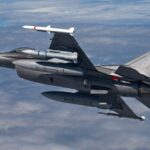
The U.S. Air Force, which has been developing the B-21 Raider for almost three years, is on track to conduct a critical design review (CDR) by year’s end, a service official said June 25.“We are on our way to critical design review,” said Randy Walden, director of the Air Force Rapid Capabilities Office, which oversees the bomber program. “I suspect it will be done before the end of the year. That’s our plan today.” A successful CDR would clear the way for fabrication…

 By
By 











